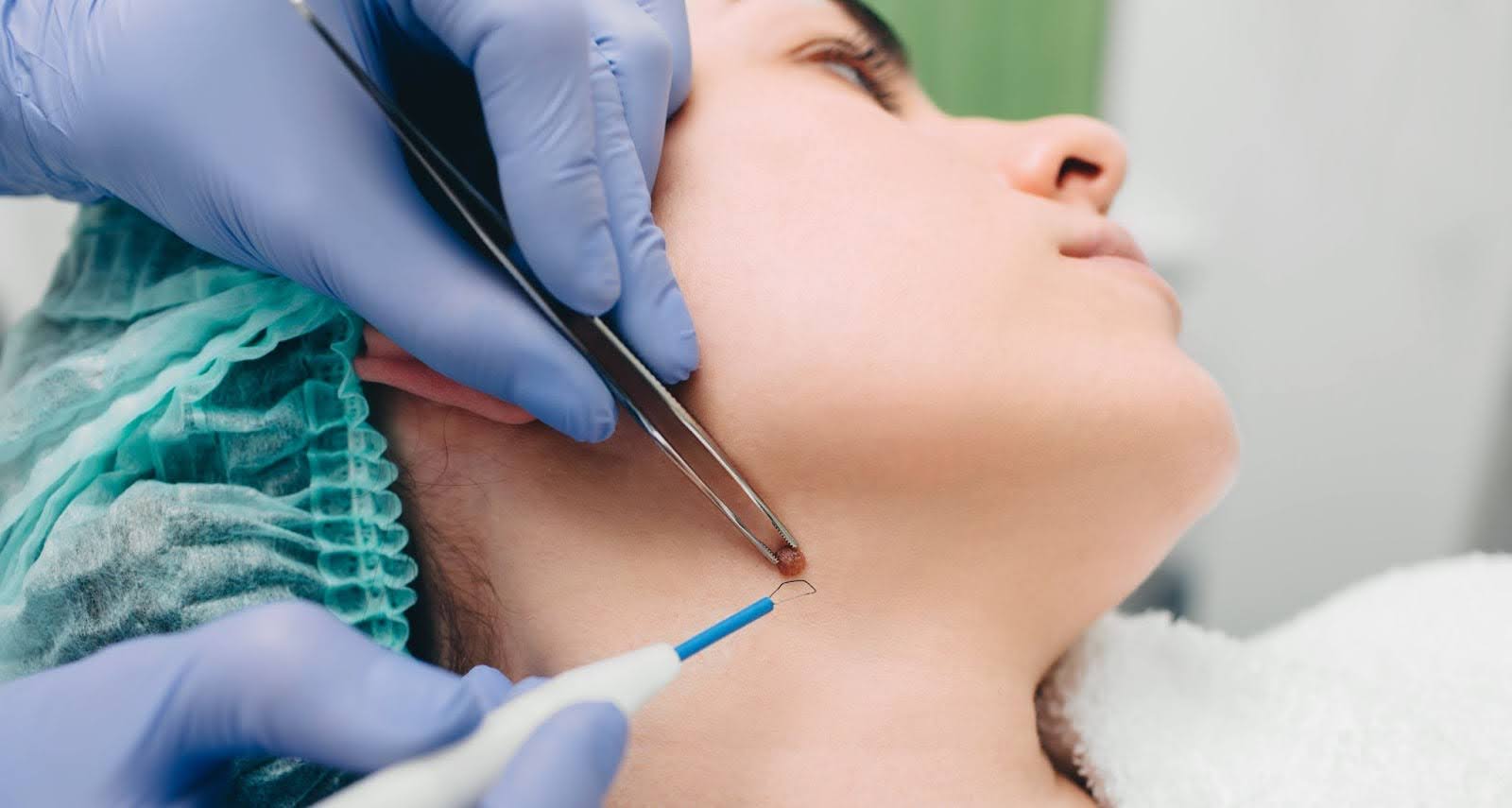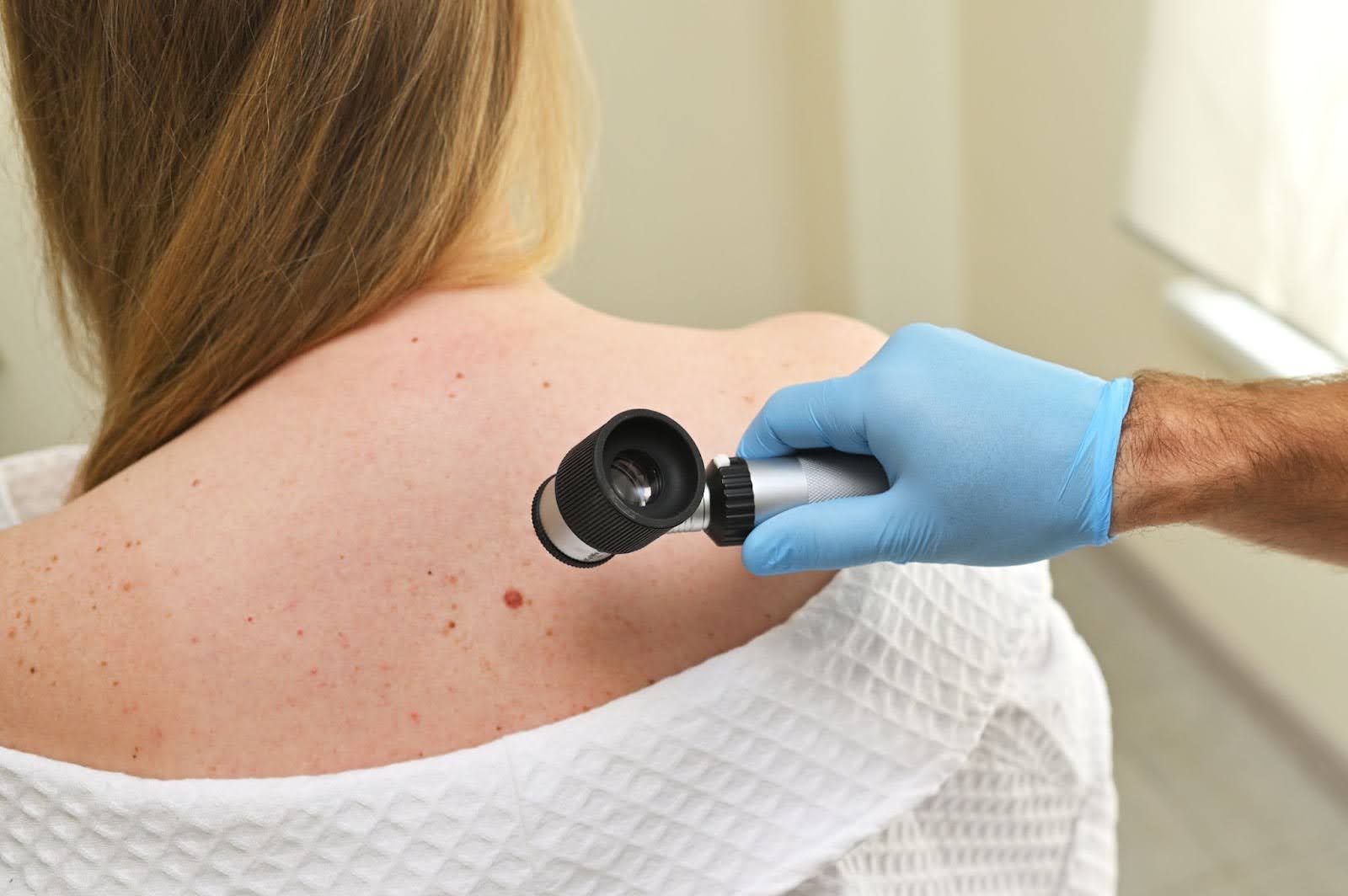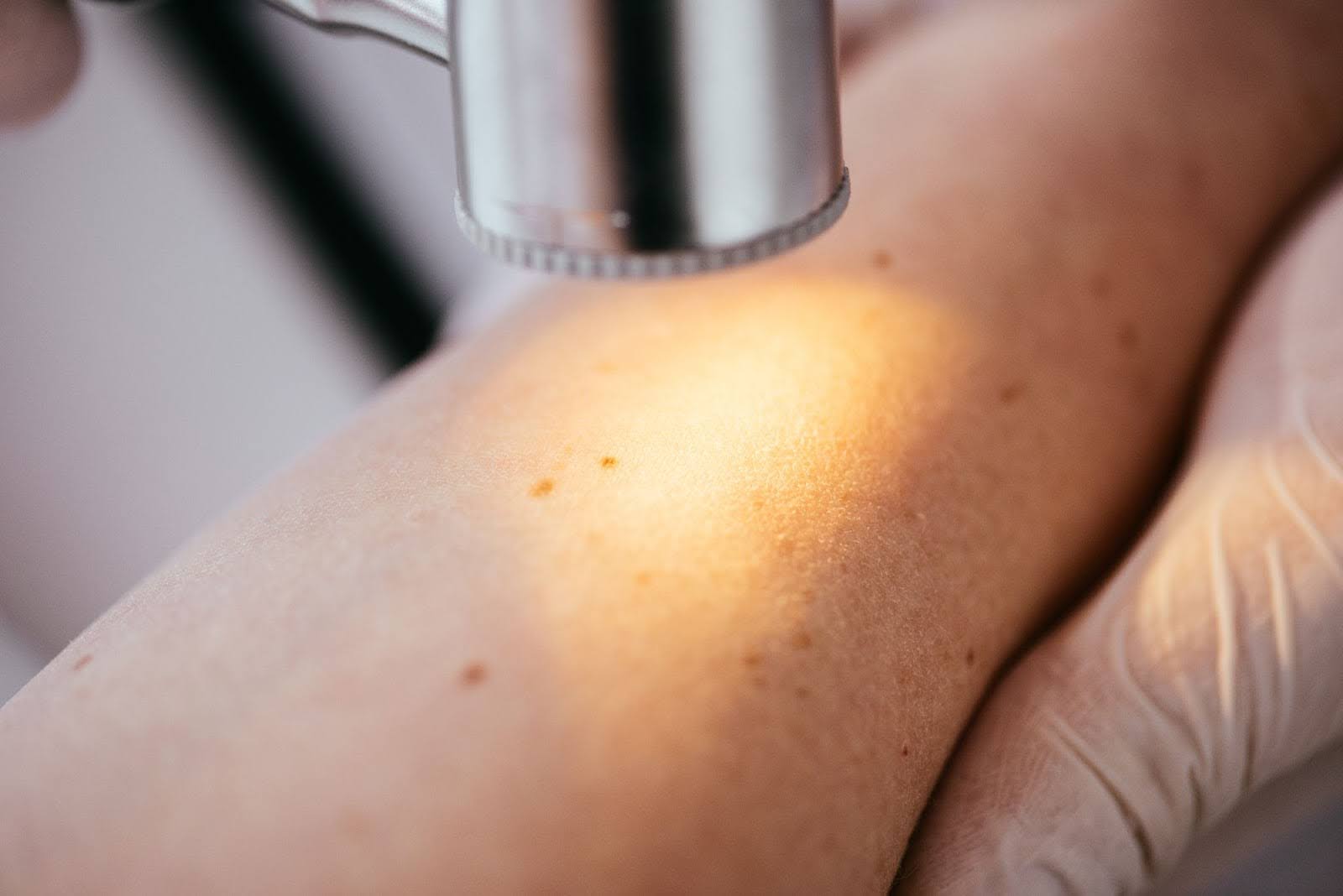
A mole can be a small mark you barely notice or a daily distraction. Many moles are harmless, but some may pose health concerns, like melanoma. They can also irritate or affect how you feel about your skin. Choosing to have a mole removed is a personal decision influenced by comfort, cosmetic preferences, and professional medical guidance. For most people, removing a mole is about feeling more at ease in their skin.
Mole removal involves medical techniques to eliminate a mole for health or cosmetic reasons. The approach depends on the mole's type, size, depth, and whether it shows signs of cancer. In most cases, the first step is having a dermatologist or licensed aesthetician examine the mole. That way, you can be confident that the procedure is safe and effective for your needs.
Consider mole removal if a mole changes in size, shape, or color. Irregular edges or uneven pigmentation can be warning signs. Moles that bleed, itch, or cause pain should be examined promptly. Cosmetic concerns, such as a mole in a prominent spot, are also valid reasons. Friction from clothing or shaving can make removal more practical. A quick evaluation confirms whether treatment is necessary.
Mole removal should only be performed by a qualified healthcare provider. Dermatologists have the expertise to assess skin lesions and choose the most effective technique. General practitioners may also perform specific procedures if the mole is straightforward and non-cancerous. Attempting mole removal at home carries risks, including infection, scarring, and incomplete removal. Inadequate removal may allow the mole to regrow and delay diagnosis if it is cancerous. Seeking a licensed skincare professional ensures both safety and proper aftercare.
Mole removal procedures vary in invasiveness, healing time, and cosmetic outcome. Your clinical provider will recommend an option based on whether the mole is benign or suspicious and its size and location. Some methods prioritize cosmetic appearance, while others are designed for thorough tissue testing. Each has its advantages and considerations.
Surgical excision removes the mole along with a small margin of skin. This method is recommended when cancer is suspected. The tissue is sent to a lab for testing. Stitches close the site, and healing takes one to two weeks. A scar may remain, but it often fades with care. This procedure offers the lowest risk of recurrence because it removes the mole entirely.
Shave excision removes a mole from the skin's surface using a surgical blade. This method is often chosen for raised moles that are not deeply rooted. The area is numbed with local anesthetic, making the procedure quick and painless. Healing usually occurs within a week, but some pigment changes at the site may remain. While the risk of scarring is low, the mole can regrow if deeper cells are left behind. It is most suitable for non-cancerous moles in areas where minimal scarring is desired.
Laser mole removal uses focused light energy to break down the pigment in the mole. It is commonly used for flat, dark moles, which have been confirmed benign. The procedure causes minimal damage to surrounding tissue, reducing scarring risk. Multiple sessions may be necessary for complete removal. However, since no tissue is collected for testing, it is unsuitable for suspicious moles. Patients often choose this option for cosmetic reasons, particularly for moles on the face.

Cryotherapy freezes the mole with liquid nitrogen, destroying the cells. This method is quick and often painless, though some redness or blistering may occur afterward. It is best suited for small, benign moles that do not require testing. The mole typically falls off within days to weeks. Multiple treatments may be necessary if the mole is larger or more stubborn. This method is widely available and cost-effective for uncomplicated cases.
Electrosurgery removes moles by burning the tissue with an electric current. It can be combined with curettage, which scrapes the mole before cauterizing. This method is effective for small, raised moles that are confirmed non-cancerous. Recovery is usually short, and scarring is minimal when performed correctly. However, it is less effective for deep moles. Patients often choose this method for its speed and precision.
Preparing for mole removal involves a consultation, possible diagnostic testing, and following pre-procedure instructions. The process ensures safety, accurate diagnosis, and the best cosmetic results. Knowing what to expect can make the experience smoother and less stressful.
During the consultation, your specialist will examine the mole using a dermatoscope. This tool magnifies the lesion and highlights patterns not visible to the naked eye. If there are suspicious features, a biopsy may be performed before removal. You will also discuss which procedure best suits your needs and preferences. Medical history, including medications and past skin issues, helps guide treatment planning. It is time to ask questions and set realistic expectations for recovery.
Before removal, your provider may recommend stopping certain medications, such as blood thinners. Avoid excessive sun exposure to the treatment area for at least a week. On the day of your appointment, cleanse the skin and avoid applying creams or lotions. If sedation is planned, you may need to avoid eating for several hours. Wear clothing that makes the mole area easily accessible. Following these instructions reduces risks and improves healing outcomes.
Recovery time after mole removal varies depending on the method used. While discomfort is usually mild, proper aftercare is essential to prevent infection and minimize scarring. Following your clinical provider's instructions closely ensures the best cosmetic and health results.
Clean the site gently with mild soap and water. Apply ointment as prescribed to aid healing and prevent infection. Keep the wound covered until advised otherwise. Avoid scratching or picking at the skin to reduce the risk of scarring. Watch for signs of infection, such as swelling, redness, or pus. If these occur, contact your doctor immediately for treatment.
Minor procedures may heal in less than a week, while surgical excision can take longer. Stitches are typically removed within seven to 14 days. The site may remain red or slightly raised for several weeks. Over time, the skin blends more naturally with the surrounding tissue. Gentle massage and moisturizer can help improve the appearance of scars. Your doctor may also recommend topical treatments to speed skin recovery.
Protect the healing site from sunlight to prevent pigmentation changes. Silicone gel sheets or scar creams can help flatten and soften scar tissue. Avoid strenuous activity that may stretch the skin in the treated area. Keep the site moisturized to support skin regeneration. Over several months, scars usually fade and become less noticeable. Consistency in aftercare makes a noticeable difference in the outcome.

All mole removal procedures carry potential risks, even when performed by professionals. Understanding these helps you weigh the benefits and make informed choices. Some risks are short-term, while others may affect long-term results.
Infection is a possible complication after any skin procedure. It can cause swelling, pain, redness, and pus formation. Following aftercare instructions significantly reduces this risk. Individuals with compromised immune systems may need extra precautions. If an infection is suspected, prompt treatment with antibiotics is usually adequate. Ignoring symptoms can lead to delayed healing and larger scars.
Scarring is possible with all mole removal methods, though it can be minimized. Some may notice light or dark spots around the treatment area once it heals. Raised scars like keloids are more common in certain skin types. Treatments such as silicone gel sheets, scar creams, or laser resurfacing may help improve the appearance. In some cases, especially on the face and upper body, licensed aestheticians may recommend microneedling or light chemical peels to refine skin texture once healing is complete. Your skincare professional will guide you based on your scar type and location.
Moles can grow back if the removal method doesn't eliminate all the mole cells beneath the skin. That is more common with shave excision or non-surgical treatments. A licensed aesthetician should continually evaluate a recurring mole. In some cases, the regrown mole may require a different removal method. Regular skin checks help catch any changes early. Maintaining follow-up appointments is key to long-term skin health.
Mole removal costs vary depending on the procedure, location, and whether it's medically necessary. In 2025, prices range widely due to differences in clinic facilities and practitioner expertise. Knowing whether insurance covers your procedure helps you plan financially.
Insurance usually covers mole removal if there is a medical concern, such as suspected cancer. Documentation from your skincare provider may be required for approval. Coverage may be full or partial depending on your plan. Some insurers also cover biopsy and lab analysis fees. Always confirm details before scheduling the procedure to avoid unexpected costs. That ensures you know precisely what is and isn't covered.
If mole removal is for cosmetic purposes, you will likely pay out of pocket. Prices vary based on the method, equipment, and the practitioner’s expertise. Fees may also include anesthesia, facility charges, and follow-up visits. While it may be tempting to choose the lowest price, quality care ensures better results and fewer complications. Choose an experienced provider that offers competitive pricing without compromising safety. Booking a consultation helps determine the exact cost for your needs.
Removing a mole that raises concern can prevent serious health problems. Treating suspicious moles early often leads to better health outcomes. Addressing cosmetic concerns sooner also reduces discomfort and improves appearance. Waiting too long can cause the problem to worsen and may require more treatment later.
Moles that change in appearance can sometimes indicate melanoma, a dangerous skin cancer. Removing suspicious moles before they spread improves survival rates. Regular skin checks make it easier to spot these changes. Any mole that bleeds, grows rapidly, or changes color should be examined quickly. Addressing these concerns promptly reduces uncertainty and supports better health outcomes.
Some moles are irritated by rubbing against clothing or jewelry. Removal eliminates this discomfort and allows for easier grooming. Many people also feel more confident when a visible mole is gone. The improvement in self-image can have positive effects on social and professional interactions. While the medical benefits are clear, the personal satisfaction is equally valuable.
If a mole concerns you, arranging a professional evaluation is the next logical step. Medical clinics and dermatologists offer multiple safe and effective removal options tailored to your case. You can choose the method that meets your medical and cosmetic needs with a proper assessment. This step can bring lasting relief, peace of mind, and improved skin health.
Curious about what’s best for your skin? Visit the Naples Laser & Skin Aesthetics blog for expert advice, treatment updates, and trusted skincare insights.
%402x.svg)

.png)
3641 10th St N Suite B, Naples, FL 34103